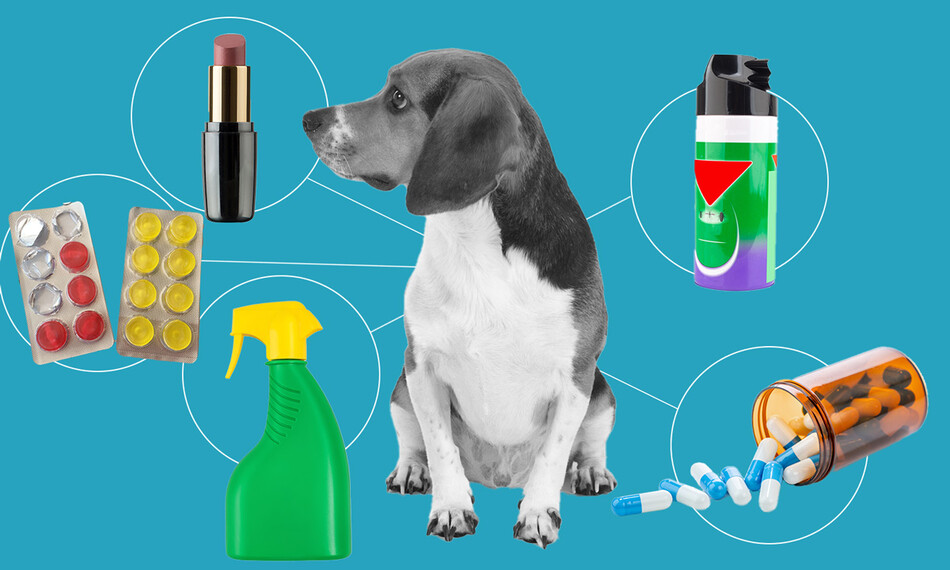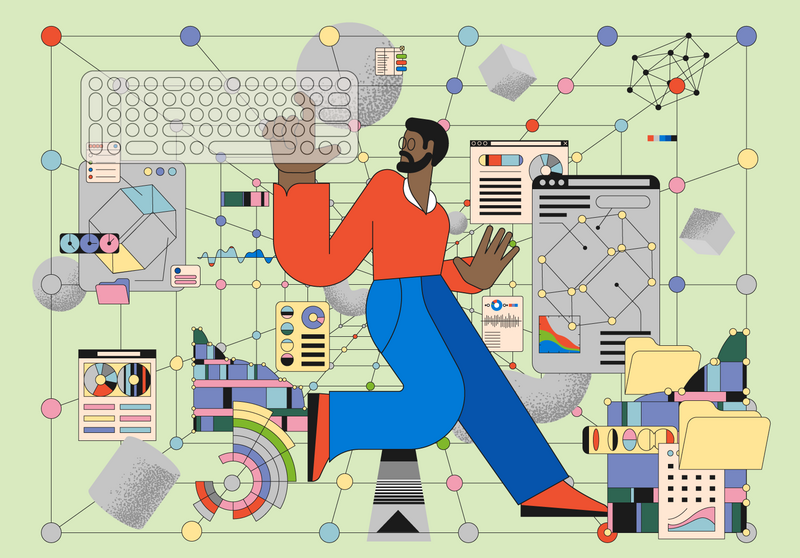Tell me about the evolution of this book.
When I adopted Hammy in 2013, all I knew was that he had spent the first four years of his life in a lab. He had a tattoo on his ear, and he seemed afraid of everything. I didn’t know anything about animal experimentation at the time — I went online to learn about the group responsible for rescuing Hammy and found out that there were then 70,000 dogs in US laboratories, most of them beagles. For years, I’d show Hammy’s ear tattoo to friends and family and get the same response: “I didn’t know we were still doing that!” or “Is that legal?” I felt the same way. When the pandemic hit and much of my freelance work dried up, I decided to devote more time to finding the answers.
What was the most shocking thing that you learned?
I think how pervasive animal experimentation is. We’ve all heard about animals being used to test cosmetics, for example. But that’s really the tip of the iceberg. Sometimes I look around and now understand that there’s almost nothing that hasn’t been tested on animals in some way. For years, car companies used animals to test car crashes. Pesticides are tested on animals. Bug spray. And, of course, drugs — that includes everything from prescription drugs and immunotherapies to cold medicines and other over-the-counter products. There’s very little that we buy or use that hasn’t been tested on animals.
The book is largely about the use of animals in laboratories (many of which were bred for that purpose), but when Hammy gets sick, you also wrestle with the idea of including him in a clinical trial, given that animals can’t give consent.
Guardians of pets have to make a lot of decisions for their animals. Hammy was lucky that he got to spend much of his life making a lot of decisions for himself — where to sleep, for example — and I tried to give him as much agency over those decisions as possible. Clinical trials can be really promising ways to use animals for scientific advancement without a lot of the trauma. The animals don’t live in a laboratory, obviously. Some just trot into the vet happily. But while an animal can’t say “no, I don’t want this,” there are other cues that we can use to read our pets and know whether it’s the right decision for them. If it’s a pet that’s really nervous, that might not be the right fit.
You write about some of the technological advances that have made the need for animal testing less obvious. What are some of the most promising? What does the future look like?
The most important thing to remember is that we’re looking for alternatives, not replacements — you can’t replace a beagle or a mouse or a monkey. So, we’re really looking for better human models. And there are a lot of promising models being developed. There are “organ chips,” which are microdevices lined with living human organ cells that mimic the function of that organ. Researchers can put in drug samples or bacteria to understand how a human organ — say a liver or a kidney — would respond. Organoids, or miniature lab-grown organs, function similarly. There are also increasingly complex computer models. So, it’s a combination of a lot of these things. And that’s where the money needs to go; we need to develop more of these methods, validate them, and make sure the regulators understand them, to see that it’s possible to do a lot of these studies without animals and come to the same kinds of outcomes.
What personal choices can people make that support more humane or animal-testing-free causes?
Of course, we can and should buy the cosmetics and personal-care products labeled “cruelty free.” That’s an easy first step. It’s not as easy to make the right choice with drugs, because they’re all tested on animals. And every new product, such as a cherry version of a cough syrup or a non-drowsy antihistamine, for example, means additional animal experiments. I understand many people depend on pharmaceuticals, but we also fill our medicine cabinets with things we may not even use. I’ve started questioning what I really need, understanding what has likely gone into developing these products. Researching this book has made me a more conscious consumer in general — I’ve realized that everything I buy is a vote for that product and that company.
You write very candidly about the tough moral questions that animal experimentation raises. Quoting from your book: “What if subjecting Hammy to a mildly uncomfortable blood draw somehow helped me? Or another dog? What if a procedure caused significant pain but promised to improve my parents’ lives? Or the lives of a dozen other people?” Where did you land on some of those questions?
It’s something that I thought about and still think about all the time. I wish I had a clear answer to that. I am thankful that there are ethicists with much more experience devoting their time to these questions.
But if I had to answer, I’d say that it’s a spectrum. Do we need to have dogs in labs having bugs and ticks put on them in order to test a bug spray? That seems crazy to me. It’s also very different from testing that might develop, say, a treatment for a rare disease that children are dying from. Animal testing is likely not going away anytime soon. But we can make better calls.
In light of Jane Goodall’s recent death, I’ve been thinking a lot about her pioneering research. She’s known for her work with chimps, of course, but she said many times that dogs were her favorite animals. Her childhood dog, Rusty, really taught her that animals have empathy, that they are all individuals. When Jane Goodall started working with chimps, she gave them names instead of numbers, which was unheard of at the time. When we think about animal testing, even about these kinds of very tricky questions, it’s easy to disassociate because these animals are not humans. But they are individuals with feelings and personalities and, yes, empathy. One of them started out, like the chimps, with just an ID tattooed on his ear — and he became Hammy.



